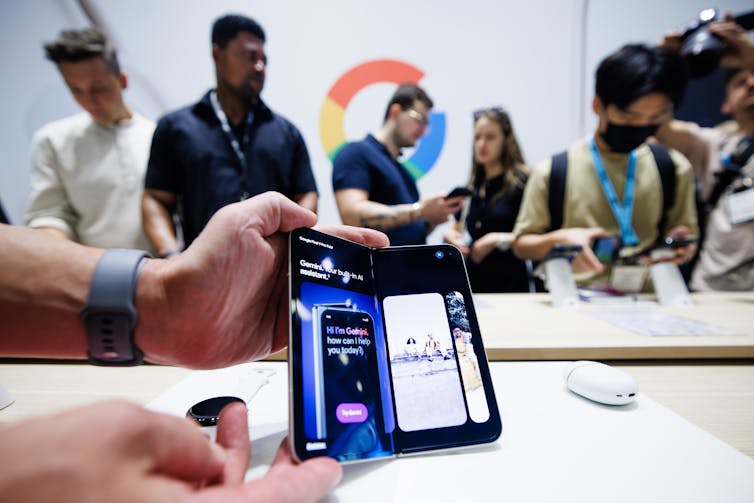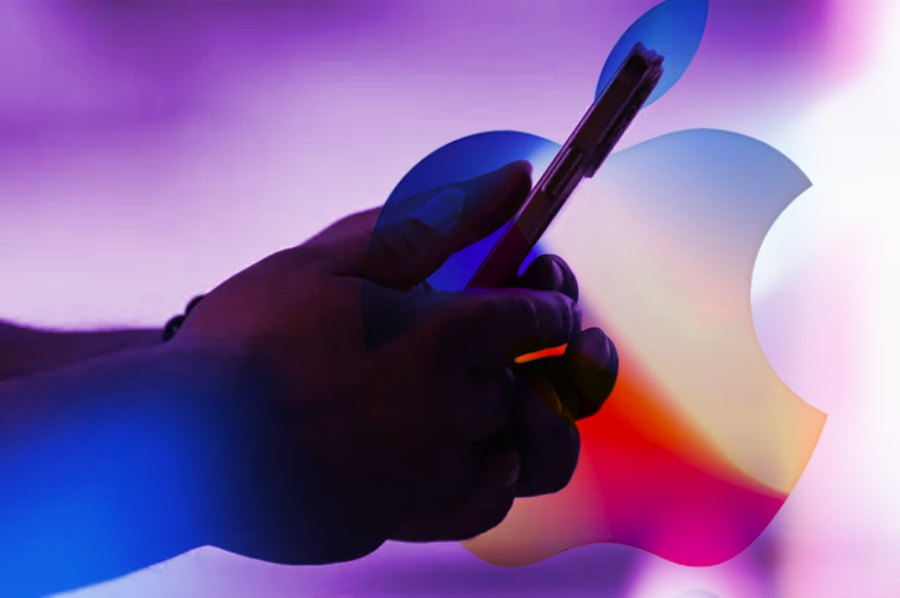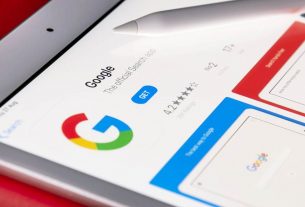Fri 04 October 2024:
Artificial intelligence (AI) has already transformed how we work and communicate. Now, it’s making its way into our pockets.
Apple launched its iPhone 16 on September 9 2024 and Google revealed its Pixel 9 smartphones on August 13. Both are bold examples of how AI is being fused with consumer devices.
As AI moves from the cloud into our hands, these phones offer a glimpse into the potential – and the risks – of this powerful technology becoming a daily companion.
One key feature of Google and Apple’s phones is their ability to transform reality — or to be more precise, our perception of it. The tech companies have introduced new camera features that allow users to edit images and videos in ways that were previously only done by professionals.
__________________________________________________________________________

https://whatsapp.com/channel/0029VaAtNxX8fewmiFmN7N22
__________________________________________________________________________
New AI features in the Pixel 9 include “Add Me”, which enables a user to place themselves in a photo by taking another picture at the same spot and merging the images using augmented reality and AI. The “Magic Editor” tool leverages AI to rearrange the composition of an image and adjust people’s positions.
And the “Reimagine” feature allows consumers to modify the background of an image by providing a text prompt.
Meanwhile, Apple’s iPhone 16 includes AI under the banner of what the company calls Apple Intelligence. It includes writing tools, an enhanced version the Siri virtual assistant and a feature which allows users to search for things just by taking a photo. As with the Pixel 9, the iPhone 16 includes photo editing tools such as “Clean Up” which will remove unwanted objects from your images.
Samsung’s Galaxy S24 phone, released at the beginning of 2024, also features a range of AI-enabled photo editing features.
The democratisation of powerful image editing tools is impressive, but it also raises serious ethical concerns.
Misinformation risk
We are discussing this at a time when misinformation is rampant. In principle, it’s possible that AI-enabled tools intended for photo editing could be subverted to blur the lines between reality and fiction even further.
Such tools could, depending on their capabilities, make it easier to create images or videos that depict events that never happened. While this capability might be fun for personal use, it has broader implications for politics and society.
We’ve already seen how doctored images and videos can fuel political controversies – think how official photos of Donald Trump’s 2017 inauguration as US president were edited to make the crowd appear larger. Now imagine a world where anyone can create convincing deep fake images – and eventually, perhaps, video – with just a few taps on their phone.
While the subject is often discussed in the context of massive investments by companies to train large language models (the technology that underpins chatbots such as ChatGPT) AI’s greatest impact is likely to come from its inclusion in everyday devices.
This is AI for the masses – powerful, accessible and in the hands of anyone who can afford the devices. The iPhone 16 and Google Pixel 9 are priced at US$799 (£604) for standard versions and upwards of US$1,500 (£1,136) for models with more features.

A Google Pixel 9 Pro Fold shown during the IFA trade fair in Berlin, Germany, in September 2024. CLEMENS BILAN / EPA IMAGES
Google’s move also signals a new phase in the arms race between the major players in the smartphone market. Google has long been a leader in internet search, but a laggard in tech hardware. The new AI features in the Pixel 9 will strengthen its position in the latter.
With Apple holding more than 50% of the US market, the pressure is on the company to maintain its position with the AI-enabled iPhone 16. It’s likely that we will soon see other competitors, including Samsung and Chinese brands, introducing more AI-enabled features. This is the new normal: AI capabilities will become a key battleground in the competition for consumers.
This also raises questions about the future of industries that rely on content creation. With powerful image and video editing tools now available in every pocket, what will happen to professional photographers and editors?
While AI might not yet be able to match the creative vision of a professional, it certainly poses a challenge to their livelihoods. Companies may find it more cost-effective to rely on AI-generated content rather than hiring professionals, leading to a shake-out in the job market.
The new standard for AI is being defined now, so tech companies that want to establish themselves as leaders must move quickly to integrate these technologies into their products or they will risk falling behind.
But the incorporation of AI into smartphones raises even more ethical questions. For many younger consumers, their first tangible experience with AI will come through features embedded in the devices they use every day. Are we ready for this level of AI in the hands of our kids?
Teenagers, in particular, will need guidance in understanding the power they wield with these new tools. Schools and families must engage in discussions about the responsible use of AI, especially as it relates to editing photos, with its implications for our perceptions of reality, and the potential impacts on mental health.
We’ve already seen the damaging effects of edited images on social media, contributing to issues like body dysmorphia and depression. As AI makes this type of editing even more accessible, these problems could be exacerbated.
This article is republished from The Conversation under a Creative Commons license. Read the original article.
______________________________________________________________
FOLLOW INDEPENDENT PRESS:
WhatsApp CHANNEL
https://whatsapp.com/channel/0029VaAtNxX8fewmiFmN7N22
![]()
TWITTER (CLICK HERE)
https://twitter.com/IpIndependent
FACEBOOK (CLICK HERE)
https://web.facebook.com/ipindependent
YOUTUBE (CLICK HERE)
https://www.youtube.com/@ipindependent
Think your friends would be interested? Share this story!





